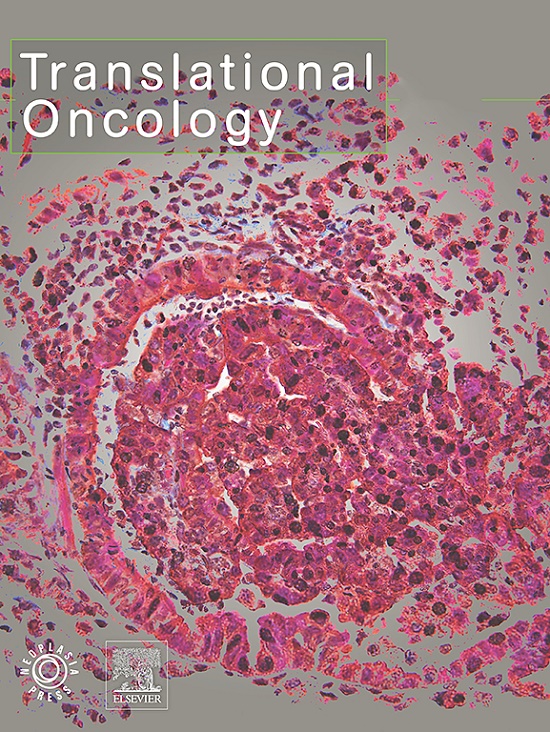Prognostic significance of perioperative circulating CD56bright NK cell and recovery of NK cell activity in patients with colorectal cancer undergoing radical surgery
IF 5
2区 医学
Q2 Medicine
引用次数: 0
Abstract
Introduction
Natural killer (NK) cell activity (NKA) is downregulated in patients with colorectal cancer (CRC), and its dysfunction is possibly associated with increased risk of recurrence. However, its role in prognosis of CRC remains unclear. Prior research has shown that surgical stress can suppress NKA. This study explores the relationship between NK cell/NKA and clinicopathological factors during the perioperative period in patients with CRC.
Methods
We prospectively enrolled 45 patients with CRC. Venous blood samples were collected preoperatively and on postoperative day 3 (POD3) and 30 (POD30). NKA was assessed by measuring the plasma levels of NK cell-secreted IFN-γ.
Results
NKA was significantly reduced on POD3 compared with baseline levels before surgery but showed significant recovery by POD30. NKA on POD30 was considerably higher in patients with advanced disease stages or one or more high-risk preoperative factors. Additionally, a higher NKA recovery in patients with advanced stage exhibited improved recurrence-free survival (RFS) and progression-free survival (PFS) (hazards ratio (HR): 0.2442). Furthermore, an increased percentage of CD56bright NK cells and a higher CD56bright/CD56dim NK cell ratio postoperatively on POD30 were associated with better RFS/PFS (HR: 0.2732, P = 0.0433 and HR: 0.2193, P = 0.024, respectively).
Conclusions
Our findings indicate that a notable postoperative increase in CD56bright NK cells on POD30, both in percentage and ratio, correlates with a more favorable prognosis in CRC patients. Additionally, higher recovery rates of NKA in patients with advanced stages may offer potential applications in risk stratification and the development of treatment strategies for CRC.



大肠癌根治术患者围手术期循环CD56bright NK细胞及NK细胞活性恢复的预后意义
导读:自然杀伤(NK)细胞活性(NKA)在结直肠癌(CRC)患者中下调,其功能障碍可能与复发风险增加有关。然而,其在结直肠癌预后中的作用尚不清楚。先前的研究表明,手术应激可以抑制NKA。本研究探讨结直肠癌患者围手术期NK细胞/NKA与临床病理因素的关系。方法:我们前瞻性地招募了45例结直肠癌患者。术前、术后第3天(POD3)和第30天(POD30)采集静脉血。通过测定血浆NK细胞分泌的IFN-γ水平来评估NKA。结果:与术前基线水平相比,NKA在POD3上显着降低,但在POD30上显着恢复。在疾病晚期或有一个或多个高危术前因素的患者中,POD30的NKA明显更高。此外,晚期患者更高的NKA恢复表现出改善的无复发生存期(RFS)和无进展生存期(PFS)(风险比(HR): 0.2442)。此外,术后POD30上CD56bright NK细胞百分比的增加和CD56bright/CD56dim NK细胞比例的增加与RFS/PFS的改善相关(HR: 0.2732, P = 0.0433和HR: 0.2193, P = 0.024)。结论:我们的研究结果表明,术后POD30上CD56bright NK细胞的显著增加,无论是百分比还是比例,都与CRC患者更有利的预后相关。此外,晚期患者更高的NKA恢复率可能为CRC的风险分层和治疗策略的制定提供潜在的应用。
本文章由计算机程序翻译,如有差异,请以英文原文为准。
求助全文
约1分钟内获得全文
求助全文
来源期刊

Translational Oncology
ONCOLOGY-
CiteScore
8.40
自引率
2.00%
发文量
314
审稿时长
54 days
期刊介绍:
Translational Oncology publishes the results of novel research investigations which bridge the laboratory and clinical settings including risk assessment, cellular and molecular characterization, prevention, detection, diagnosis and treatment of human cancers with the overall goal of improving the clinical care of oncology patients. Translational Oncology will publish laboratory studies of novel therapeutic interventions as well as clinical trials which evaluate new treatment paradigms for cancer. Peer reviewed manuscript types include Original Reports, Reviews and Editorials.
 求助内容:
求助内容: 应助结果提醒方式:
应助结果提醒方式:


